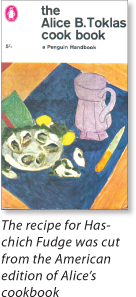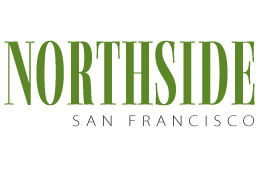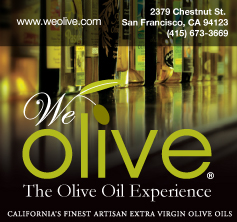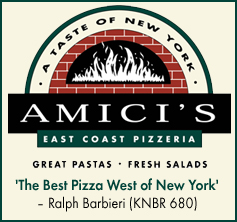(Part 5 in a series)
She’s this month’s unlikely heroine … but not for the reason you might think
 Since I started a series of profiles for Northside San Francisco on what I term “Unlikely Heroes in the Gastronomic Trenches,” I have been searching for an unlikely heroine.
Since I started a series of profiles for Northside San Francisco on what I term “Unlikely Heroes in the Gastronomic Trenches,” I have been searching for an unlikely heroine.
I don’t want to present myself as an unconscious, male-obsessed jerk. So I did come up with some likely candidates – Eliza Acton, who wrote Modern Cookery for Private Families in 1845, Isabella Beeton and her book, Household Management published in 1861, and, of course, Fannie Farmer, Betty Crocker, M.F.K. Fisher and, yes indeed, Julia Child. Maybe I can come up with some Fisher stuff for another time, and right now I’m all Julia Child-ed out.
But suddenly I remembered a woman I met back in the fifties – Poppy Cannon, wife of Ralph Bunche, Nobel Peace Prize-winning civil rights activist. Poppy was food editor for House Beautiful when I met her, and she gave me a copy of a book she had just edited, Aromas and Flavors of Past and Present, by Alice B. Toklas.
Of course – Alice B. Toklas, The Brownie Lady, as I had come to think of her. Surely she’s an Unlikely Heroine in the Gastronomic Trenches, I told myself.
Well, she is certainly that, but not for the reason that may come to readers’ fertile minds (think Maryjane brownies).
Alice was a hometown girl. She was born in San Francisco in 1877 on O’Farrell Street a block away from what is now called Alice B. Toklas Place, an alley between Polk and Van Ness.
And lest we forget, she went on to become Gertrude Stein’s buddy, lover, secretary, gofer, and cook. Remember it was Stein, born in Oakland, who said when she returned to visit her hometown, “There is no there, there.” But living with Stein in Paris, Alice experienced a lot of there, there. In Stein’s Left Bank apartment on Rue de Fleurus, young Alice met and became friendly with Henri Matisse, Pablo Picasso, Juan Gris, Georges Braque, Ernest Hemingway, Paul Bowles, Sherwood Anderson, and other creative types of the time. They came to the art-filled salon to have high discourse with Stein, and to chat up Alice and eat her watercress sandwiches and her Trout au Bleu.
Today, at least here in San Francisco where we pay attention to such things, Alice B. Toklas is usually thought of as a pothead for a recipe that caused a sensation – Haschich Fudge – in her Alice B. Toklas Cook Book, published in 1954. Haschich Fudge may be seen as a forerunner to hippie brownies. Here’s a quote from her cookbook that will set the stage: “In the menu there should be a climax and a culmination. Come to it gently. One will suffice.” OK.
Yes, Alice was a sensualist, but she really had very little to do with that mind-blowing fudge recipe. She got it from surrealist painter Brion Gysin and included it in the book at the last minute. It was kicked out of the American edition but included in the English one. Perhaps those Brits were more broad-minded.
While Haschich Fudge might have been enough for me to name Alice an Unlikely Heroine in the Gastronomic Trenches, I’m going the extra mile here with her for other reasons.
Alice B. (for Babette) Toklas was an epicure, and an outlandish, decadent one at that. But she didn’t just talk and write sensuously about exotic cuisine, she could prepare it as well. She was an intellectual cook who believed in the gastronomic joys of excess. She was a fervent believer in the Oscar Wilde mandate, “Everything in moderation, including moderation.” Where is Alice now that we need her? She died in 1967.
Consider these dishes from Alice B. Toklas. Some of the titles alone should get your gastronomic juices running.
Tarte Chambord (with raspberry jam and lots of raspberry liqueur), Scheherazade’s Melon (a hollow melon filled with pineapple, peaches, bananas, raspberries, wild strawberries, champagne, crème de menthe, kirsch, and butter of course), Bavarian Cream Perfect Love (lots of whipped cream), Scrambled Eggs Picabia (named for the Dada painter and calls for equal parts butter and egg), Pike in Half Mourning (covered in green mayonnaise), Nymph Aurora (shrimp in heavy cream), and extravagant mashed potatoes (equal parts potatoes and butter), and short ribs of beef (add a beef knuckle and a calf’s foot, naturally).
Here’s one more that deserves special comment: Bass Picasso.
This fine bass is poached in wine and butter, covered with yellow mayonnaise, then decorated with red mayonnaise, and topped with sieved hard-boiled eggs, truffles and finely chopped herbs. By the way, in case you want to try this, the red mayonnaise is not colored with catsup but with tomato paste. When Picasso was served this humble bass, he is said to have suggested that Alice offer it to impressionist painter Henri Matisse.
I have tried Alice’s decadent mashed potatoes and her beef short ribs. Rich? Yes, but delicious. And in case you were going to ask – and I’m giving you the straight dope here – I have not tried the Haschich Fudge.
Ernest Beyl is regular contributor to Northside San Francisco and a striving gourmand. His favorite sandwich is composed of onion, tomato, mayonnaise and foamy white bread. Known for his eclectic dining habits, he is willing to try anything – well, almost anything.
E-mail: ernest@northsidesf.com








 Since I started a series of profiles for Northside San Francisco on what I term “Unlikely Heroes in the Gastronomic Trenches,” I have been searching for an unlikely heroine.
Since I started a series of profiles for Northside San Francisco on what I term “Unlikely Heroes in the Gastronomic Trenches,” I have been searching for an unlikely heroine.
